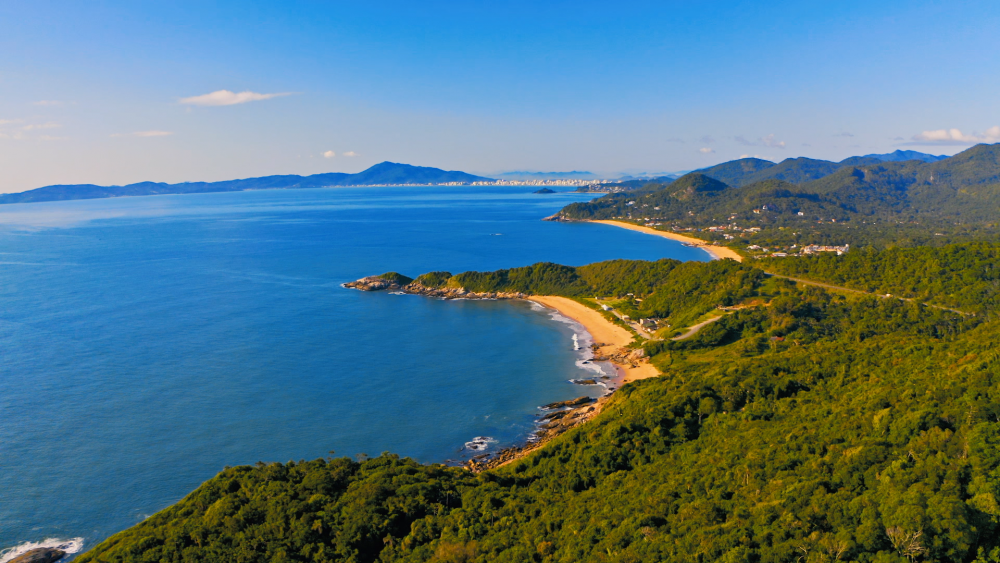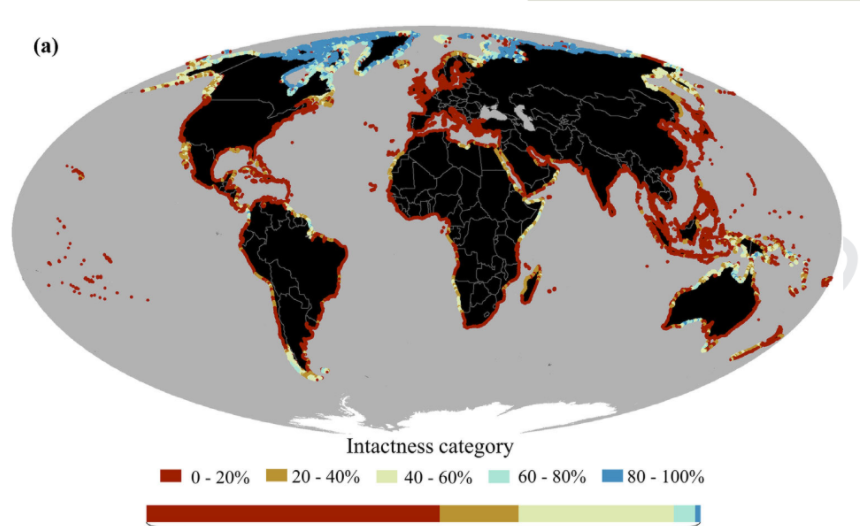
The Last of the Natural Coasts

An international team of environmental scientists has found that as of 2013, only 15.5% of the Earth’s coastal areas remained ecologically intact. This eye-opening finding is the result of a study that for the first time merges both terrestrial and marine human impact maps in a global assessment of the anthropogenic pressures affecting coastal regions.
“We found that intact coastal areas have already become relatively rare, based on the most current data available from 10 years ago,” said Benjamin Halpern, executive director of UC Santa Barbara’s National Center for Ecological Analysis & Synthesis and a co-author of the new paper, which appears in the journal Conservation Biology. “Pressures to these coastal areas are not subsiding, so the amount of intact coastal area today is almost certainly less.”
The findings are a stark reminder of both the heavy reliance humans have on the coast, and the dwindling amount of intact coastal area that we have left. “Coastal regions contain high levels of biodiversity and are relied upon by millions of people for ecosystem services such as food and storm protection,” said the study’s lead author, Brooke Williams, from the University of Queensland (UQ). “Our results show that urgent action is needed to conserve those coastal regions that do remain intact and restore those that are degraded, especially to help mitigate climate change.”
A Comprehensive Look
According to the scientists, previous studies of human impact on the coast have tended to “focus strictly on either the terrestrial or the marine realm.” This comprehensive look at the human impact on the world’s coastal areas reveals not only the locations, but also the extent of these pressures.
“Coasts are where the land meets the sea, and yet conservation and management almost always treat them separately,” said Halpern, who is also a professor in UCSB’s Bren School of Environmental Science & Management. “By evaluating them together, we helped identify where these connected land and seascapes are relatively untouched, and the many places where they are not.”
According to the study, coastal regions containing seagrasses, savannah and coral reefs had the highest levels of human pressure — a swath that encompasses most of Europe, Asia, Africa, the Americas and the South Pacific. The study also showed that in most coastal countries, more than 50% of their coastal regions were degraded, and that nearly half of protected areas across coastal regions were exposed to high human pressures.

A map of the intactness of global coastal regions
Photo Credit: COURTESY IMAGE
Canada, according to the study, is responsible for the largest expanse of coastal region that remains intact, with large expanses also located in Russia, Greenland, Chile, Australia and the United States.
But even in the far north, where a large proportion of intact coasts exist, coastal areas are not safe, Halpern said.
“Climate change is quickly melting sea ice and opening up coastal areas to development, resource use and environmental damage,” he said. “Time is short to protect the last of these intact places.”
To preserve and enhance what is left, and to minimize further damage to these essential land and seascapes, the researchers call for increased, proactive protections and specific restoration targets.
“Understanding why coastal systems are under pressure can help us design and implement more targeted management strategies,” said co-author Amelia Wenger, a research fellow at UQ.
As nations discuss new climate change action at the United Nation’s Conference of the Parties, the team urges governments to proactively conserve the valuable remaining intact coastal regions that they are responsible for, while restoring those that are degraded. To facilitate and promote the conservation coastal regions, the authors have made the dataset of intactness across coastal regions publicly available through and free to use: https://doi.org/10.48610/fd85061.



